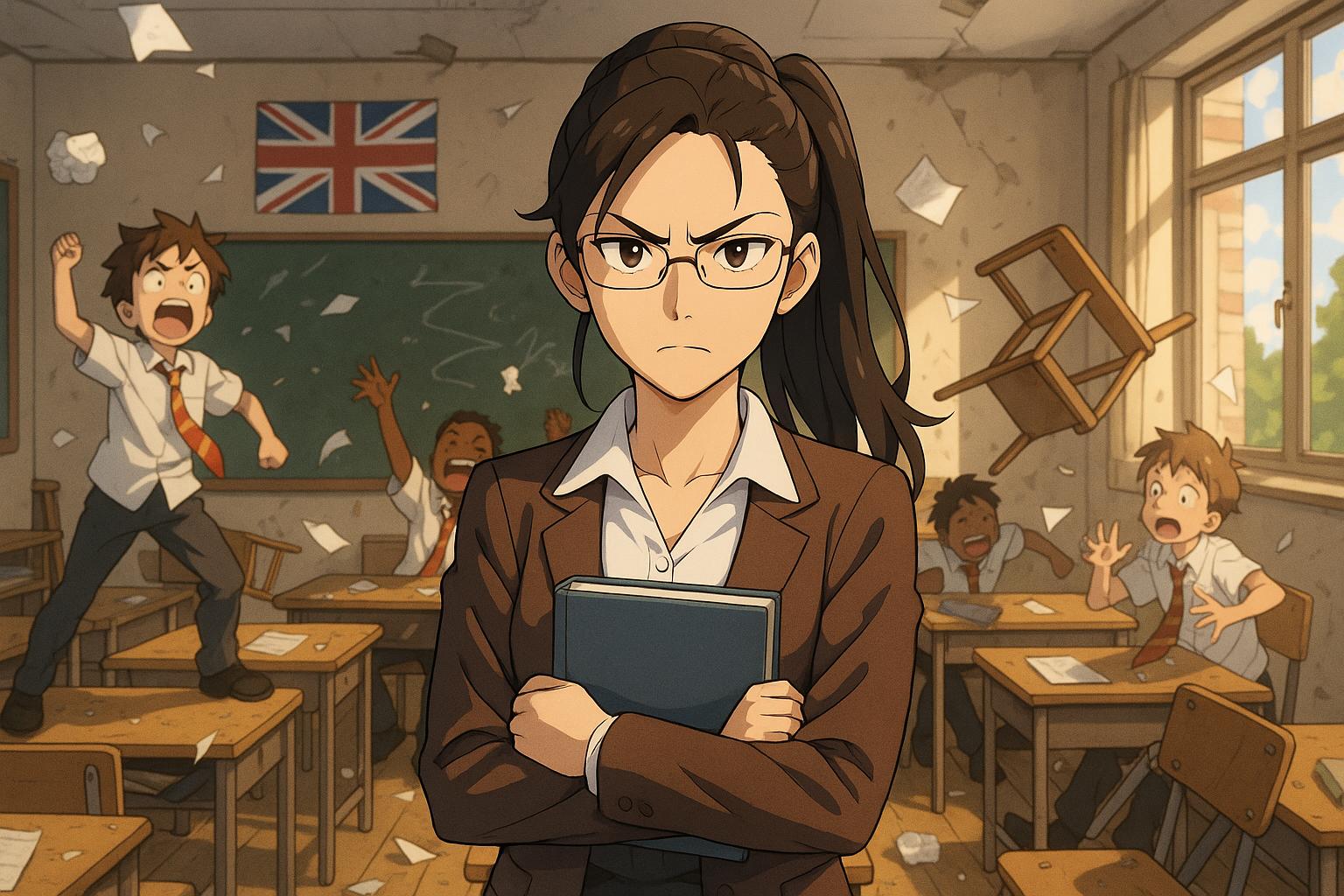Sophie Walker, a science teacher at Westbourne Academy in Ipswich, is one of many educators reaching a breaking point amidst escalating incidents of disruptive behaviour in schools across the UK. Having stepped into the profession with enthusiasm a decade ago, Walker now finds herself and her colleagues taking drastic measures, such as striking, to highlight the unacceptable conditions in their workplace. Reports indicate that teachers are facing physical threats, with incidents of chairs and scissors being thrown at them. Students often refuse to attend classes, causing significant disruption, as described by Walker, who states, “They go and collect other students from classes and roam around in large groups. They come in with no intention of attending any lessons."
The situation at Westbourne Academy reflects a broader trend observed across educational institutions in England, where the incidence of disruptive behaviour has markedly worsened since the onset of the COVID-19 pandemic. This deterioration has been linked to reduced social interaction during lockdowns, which has affected students' socialisation and ability to follow rules. According to Amanda Spielman, the outgoing chief inspector of schools in England, there has been an uptick in confrontational behaviours, including students refusing to comply with teachers and walking out of lessons mid-way. Such actions have resulted in increased suspensions for physical assaults and verbal abuse, illustrating a serious challenge for educators attempting to maintain classroom order.
Despite the challenges, the leadership at Westbourne Academy asserts that a majority of its pupils exhibit positive behaviour and wish to learn. However, the trust that runs the school admits that a “small but significant minority” of students is failing to meet expected standards. Walker, representing the National Education Union (NEU), expresses hope that the strike will compel the leadership to adopt more robust systems to manage student behaviour. She notes the crucial role of effective communication between staff and administration, especially since the school has a new principal who is still learning the landscape of the institution's difficulties.
Both parents and teachers are voicing their frustrations regarding the handling of behavioural issues. A mother recounted her son being attacked outside school and the lack of follow-up from the administration, while another parent withdrew their autistic daughter from the school due to inadequate support in dealing with bullying. These anecdotal accounts echo the concerns raised by Vic Goddard, an experienced education leader who has pointed out that certain pupils, especially those who missed foundational years of education during the pandemic, are now trapped in cycles of poor behaviour. He emphasises the necessity for schools to address funding shortages and improve the retention of teachers to create a stable learning environment.
Interestingly, the response to these strikes varies significantly among families. Some parents express unwavering support for the teachers, acknowledging the challenging climate that has forced educators to resort to strike action. Rebecca, a parent with a daughter attending the school, voiced her approval: “I don’t blame the teachers for going on strike. They shouldn’t be getting abused.” On the other hand, some parents are frustrated with the strikes, perceiving them as detrimental to the education of their children and indicative of broken relationships between educators and students.
As the discourse continues, it remains clear that the interplay of student behaviour, staff welfare, and parental engagement will be pivotal in shaping the future of educational environments not only at Westbourne Academy but nationwide. With the Department for Education asserting its commitment to tackling these challenges, it will require a concerted effort from all stakeholders, including families, to address the deteriorating conditions that have left teachers like Sophie Walker questioning their future in an increasingly tumultuous landscape.
Reference Map
- Paragraph 1: [1]
- Paragraph 2: [3]
- Paragraph 3: [1]
- Paragraph 4: [2], [7]
- Paragraph 5: [6]
- Paragraph 6: [1], [4]
- Paragraph 7: [5]
- Paragraph 8: [2]
Source: Noah Wire Services
